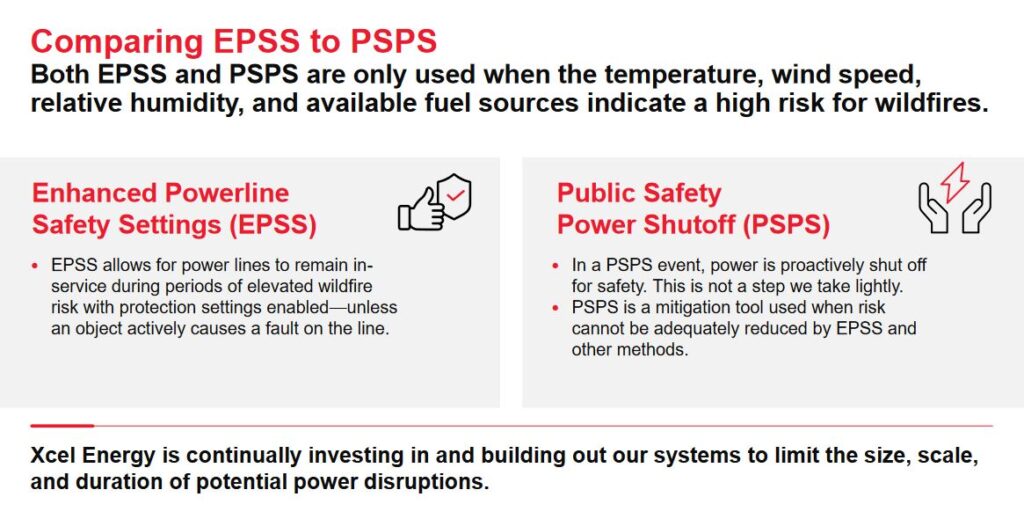Xcel Energy admits it has some work to do.
The utility is spending nearly $3 billion this decade on equipment to prevent wildfires, but all this new tech leaves customers in the dark.
“We need to do a better job educating the public on what these definitions mean and how they need to react to it,” local Xcel rep Blair McGary told Summit County commissioners this morning. “We’re not there yet and we are trying really hard to get better at it.”
One major problem is all the new terminology Xcel is throwing at customers. McGary explained a set of fail safes made to prevent fire and protect reliable power: PSPS and EPSS.

The first fail safe is PSPS, or Public Safety Power Shutoff, when the utility shuts down power before a downed line can spark a fire. This happens when dry weather, wind and other fire conditions reach a dangerous level.
This strategy has backfired. In April, Governor Jared Polis scolded Xcel for shutting down some Front Range power during high fire danger.
The second fail safe is more common and known as ESPS, or Enhanced Powerline Safety Settings.
“That is when our lines are running in more sensitive settings, which can easily prompt an outage that then is an extended outage because we have to send our crews to look at it,” McGary said.
ESPS was responsible for several hours-long outages and Silverthorne this summer and dozens more on the Front Range.
Statewide, Xcel powerlines use ESPS more than half of the year. County commissioner Tamara Pogue questioned this strategy, saying fire danger is rarely high enough for long enough to justify such touchy settings. McGary countered, saying fire danger in other parts of the state can be elevated for months at a time.

